Casio PX-S1000 Digital Piano – Demo
CAD 699.99 Original price was: CAD 699.99.CAD 499.99Current price is: CAD 499.99.
-
One Demo Unit Remaining!
This model (Casio PX-S1000) has been replaced by the Casio PX-S1100. Click for updated pricing, stock, and features.
The newest entry to Casio’s popular Privia line, the PX-S1000 digital piano is poised to continue the Privia line’s legacy of providing an excellent piano experience for the price. With a fresh new design, modern control interface, and the super-slim, unibody case coming in at under 25 lbs, the PX-S1000 is ready for a variety of playing situations.
OUT OF STOCK
Video Overview
Description
Product Overview
Not traditionally thought of as one of the top manufacturer’s high-end market (though this is changing in recent years), Casio has been a force to be reckoned with in the entry-level digital piano market for a number of years now, with a reputation for offering consumers a lot of bang for their buck, with an arguably superior value proposition than similarly priced Yamaha products. The Casio Privia PX-S1000 digital piano is their latest entry to this part of the market.
Privia digital pianos are known for producing a surprisingly authentic grand piano sound for the price point, and the PX-S1000 attests to this with an even more satisfying sound engine than the previous generation PX-160. Add in a newly upgraded Smart Scaled Hammer Action Keyboard, outfitted with ebony and ivory key textures, and you can rest assured you’ll be playing on an instrument with uncompromising piano touch despite what weather conditions may dictate.
Casio clearly wanted to bring a modern, contemporary design here too – the control interface only activates and lights up when the power button is pressed, another meaningful difference from previous generation Privias.
Piano Action
The PX-S1000 features an updated key action by Casio, referred to as the Smart Scaled Hammer Action Keyboard. This action uses a double sensor instead of the triple sensor you’ll find in other, older Privia pianos. This means Casio has likely intended for the PX-S1000 to be used by players that may not have the previous acoustic piano experience, or as compact, easy to transport performance or rehearsal instrument.
The texture on the white keys has been upgraded over previous entries to the Privia series, coming close to the feel of ivory. The weighting is solid, and even accounting for the slight regression to a double sensor, this action still offers satisfying playability.
Piano Sound Engine
The Casio PX-S1000 feature’s Casio’s well-reviewed AiR tone generator. This a sample-based engine (4-velocity layer) with additional synthesis. This engine features ample polyphony with 192 notes, and a 16-watt amplification system running through a surprisingly powerful stereo speaker system. The acoustic piano tone really stands out, with lots of players arguing that it’s the best in it’s class. The PX-S1000 also offers onboard control over reverbs and chorus effects which can be accessed via ‘Sound Mode’. This new feature essentially simulates a surround-sound-like effect, both when playing with the speakers engaged and with headphones. They’ve also included 4 types of hall simulator options that simulate the sonic experience of playing inside 4 different concert halls.
One thing to be aware which may turn some folks off with the PX-S1000 is that in their attempt to try something different with the control interface, Casio has went with a system that requires various shortcut commands to navigate the sounds and features of the instrument. This is a relatively minor thing to zero in on, but prospective buyers should know that they’ll most likely need to be spending some time with the manual to get familiar with the instrument. Casio anticipated this potential learning curve so they’ve made the PX-S1000 compatible with the Chordana Play app which allows the user to control the instrument’s sounds and features on a smart device via Bluetooth.
There are 18 on-board sounds, such as electric piano, harpsichord, and vibraphone, which are all quite nice, but another notable observation, the various sound patches are not normalized to one another with regards to volume, so you may have to do some adjusting when switching between tones.
Connectivity
A welcome addition to the Casio PX-S1000 is the dual ¼” stereo outputs, a lifesaver for those requiring connection to an amplifier. Oddly, while the PX-S1000’s Bluetooth Audio lets you play along with your favorite songs, there’s no Bluetooth MIDI here. Typically, instruments at lower price points have Bluetooth MIDI, and Bluetooth Audio is a premium feature reserved for instruments in higher price categories. Instead, the PX-S1000 also a class-compliant USB port for transmitting MIDI information.
Notable Features
The fact that you can avoid the AC adapter and instead run the PX-S1000 on battery power is a definite standout that will undoubtedly appeal to certain users. The PX-S1000 can go for up to 4 hours on AA batteries, something some gigging musicians will take advantage of. We should also highlight the slim design Casio went with as the PX-S1000 is definitely one of the most portable 88-note digital piano available, along with the Roland FP10.
- AiR Tone Generator with damper resonance and string resonance
- 18 on-board sounds
- 192 note polyphony
- Super modern top panel design with illuminated touch sensor controls
- Onboard 16W stereo amplifier with two stereo speakers
- Smart Scaled Hammer Action Keyboard
- Bluetooth Audio
- Compatibility with the free Chordana Play for Piano app for iOS/Android
- Weighs less than 25 lbs
- Two headphone jacks
- 2 ¼” audio outputs (R/L Mono)
- Metronome
- MIDI recorder
- Music rest
- Standard basic sustain pedal
- Optional SP-34 3-pedal unit add-on accessory
Conclusions
With a slick, modern appearance, the PX-S1000 is a worthwhile entry to Casio’s famed Privia line. While there are some other models at this price point that might have a better tone, or another that may feel a little bit better, the total package Casio is offering here may be just the ticket for you.
Casio PX-S1000 Owner’s Manual
Casio PX-S1000 Related Resources
Specs
| Keyboard | 88-key piano keyboard Duet: Adjustable tone range (–2 to +2 octaves) Transpose: –12 to 0 to +12 semitones Octave shift –2 to 0 to +2 octaves |
| Sound Source | Number of Tones: 18 (17 full-keyboard tones + 1 low-range bass tone) Layer (excluding bass tone) Split (bass tone only in low range) Maximum polyphony: 192 notes Touch Response: 5 sensitivity levels, Off Tuning: 415.5Hz to 440.0Hz to 465.9Hz (0.1Hz units) Temperament: Equal temperaments plus 16 other types |
| Acoustic Simulator | Hammer response, Key off response, String resonance, Damper resonance, Damper noise, Key on action noise, Key off action noise |
| Sound Mode | Hall simulator (4 types), Surround (2 types) |
| Other Effects | Chorus (4 types), DSP, Brilliance (–3 to 0 to +3) |
| Demo Song | 1 |
| Music Library | Built-in Songs 60 User Songs: 10 (Up to approximately 90KB per song, approximately 900KB for 10 songs)* Based on 1KB = 1024 bytes, 1MB = 10242 bytes Song volume: Adjustable (Setting also affects MIDI recorder song playback.) Part On/Off: L, R |
| MIDI Recorder | Functions: Real-time recording, playback Number of Song: 1 Number of Tracks: 2 Capacity: Approximately 10,000 notes total Recorded Data Protection: Built-in flash memory MIDI recorder volume: Adjustable (Setting also affects Music Library song playback.) |
| Metronome | Beat bell: Off, 1 to 9 (beats) Tempo Range: 20 to 255 Metronome Volume Level: Adjustable |
| Pedals | Included SP-3 pedal assignable functions: Damper (off, on), sostenuto (off, on), soft (off, on), metronome (start, stop), tempo setting Separately available SP-34 pedal unit: Damper (off, half, on), sostenuto (off, on), soft (off, on) |
| Other Functions | Auto Resume Panel Lock Notification tones (Selectable sets 1, 2, 3; Adjustable volume) |
| Bluetooth Connection | Bluetooth Version: 5.0 Supported Profile: A2DP Supported Codecs: SBC Wireless Output: Bluetooth Class 2 Transmission Frequency Range: 2402 to 2480 MHz Maximum Wireless Output: 4 dBm |
| MIDI | 16-channel multi-timbre receive |
| Inputs/Outputs | PHONES jacks: Stereo mini jacks (3.5mm) x 2 Power: 12V DC AUDIO IN jack: Stereo mini jack (3.5mm)/ Input impedance: 10kΩ, Input voltage: 200mV LINE OUT R, L/MONO jacks: Standard jacks (6.3mm) x 2/ Output impedance: 2.3kΩ, Output voltage: 1.3V (RMS) MAX USB port: Type B DAMPER PEDAL jack: Standard jack (6.3mm) PEDAL UNIT jack: Proprietary jack |
| Acoustics | Amp output: 8W + 8W Speakers: 16cm x 8cm (oval) x 2 |
| Power Supply | 2-way Batteries: 6 AA-size alkaline batteries Battery Life: Approximately 4 hours continuous operation on alkaline batteries Actual continuous operation time may be shorter due to battery type and performance type. AC Adaptor: AD-A12150LW Auto Power Off: Approximately four hours (under AC adaptor power) or six minutes (under battery power) after last operation, can be disabled. |
| Power Consumption | 10W |
| Dimensions | 132.2 (W) x 23.2 (D) x 10.2 (H) cm (52 1/16 x 9 1/8 x 4 inch) |
| Weight | Approximately 11.2kg (24.7 lbs) (without batteries) |
| Included Accessories | Pedal (SP-3), AC Adaptor (AD-A12150LW), Music Stand |
| EAN code | PX-S1000RD: 4971850362555 PX-S1000BK: 4971850362470 PX-S1000WE: 4971850362487 |
Additional Information
| Weight | 32 lbs |
|---|---|
| Dimensions | 58 × 12 × 8 in |
Reviews (0)
Be the first to review “Casio PX-S1000 Digital Piano – Demo” Cancel reply
You must be logged in to post a review.
You may also like…
Digital Pianos
Digital Pianos
Digital Pianos
Digital Pianos
Related products
Stage Products
Digital Pianos
Schimmel Grand Pianos
Digital Pianos
FP Series
Digital Pianos
Digital Pianos
Casio Digital Pianos
W. Hoffmann Upright Pianos
PX Series
PX Series
Digital Piano Clearance Items

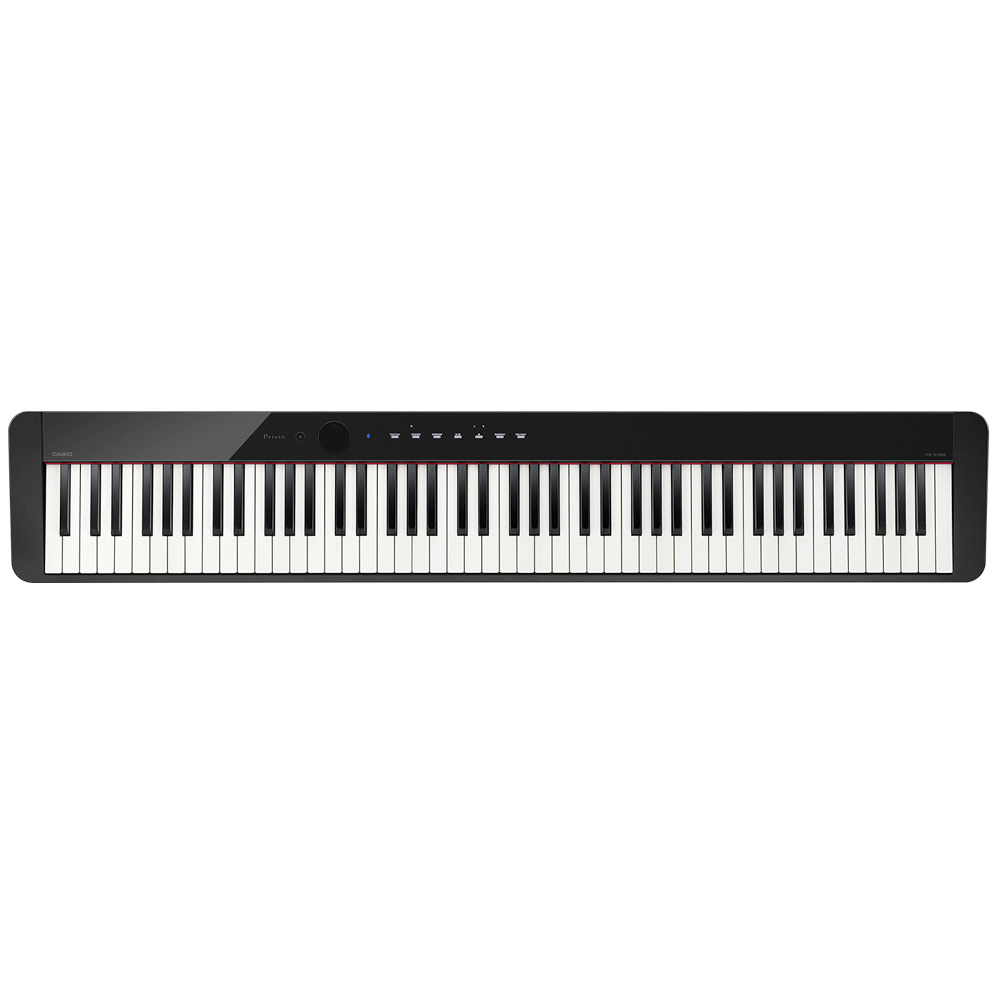




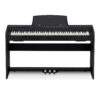



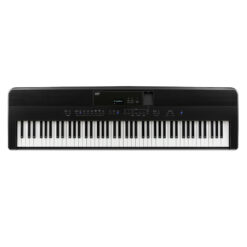


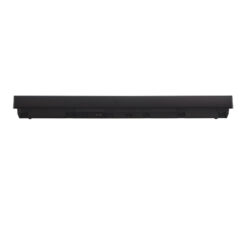

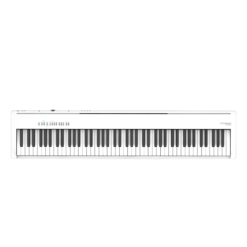


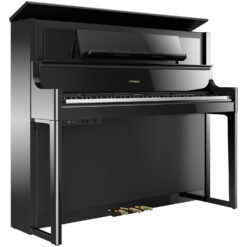






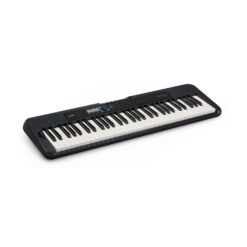
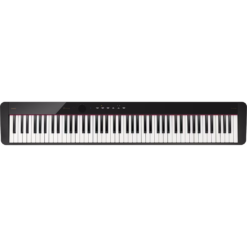

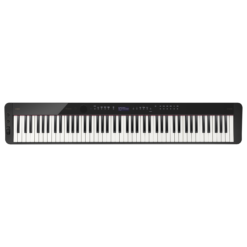
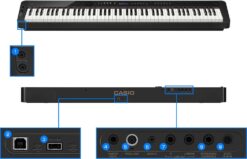


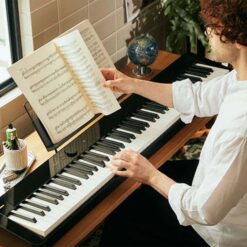


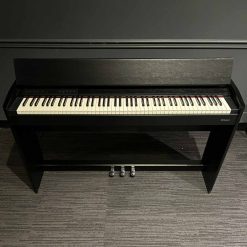
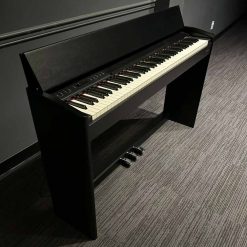


Reviews
There are no reviews yet.